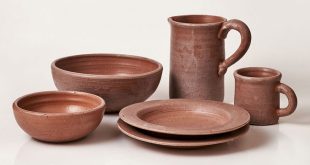A prickly mouthful
 Pufferfish can fill themselves up with water so that they are too big to swallow. The porcupine fish has spines which stick out when it blows itself up. Its warning color shows up more clearly then, too.
Pufferfish can fill themselves up with water so that they are too big to swallow. The porcupine fish has spines which stick out when it blows itself up. Its warning color shows up more clearly then, too.
A sticky trap
 A spider’s web is not its home but a food trap. Orb webs, like this one, have sticky threads that trap the spider’s insect prey. Some spider in tropical forests build huge orb webs nearly 6 metres across.
A spider’s web is not its home but a food trap. Orb webs, like this one, have sticky threads that trap the spider’s insect prey. Some spider in tropical forests build huge orb webs nearly 6 metres across.
A sweet tooth all round
 Ants carry the caterpillars of the large blue butterfly into their nest. There, the ants feed on the sweet honeydew produced by the caterpillars, which in return feed on the tiny ant larvae.
Ants carry the caterpillars of the large blue butterfly into their nest. There, the ants feed on the sweet honeydew produced by the caterpillars, which in return feed on the tiny ant larvae.
A tasty dish
 The crested porcupine, which lives in Africa and parts of Europe, has often been hunted for its tasty meat. Now it is becoming rare. When the Porcupine meets an enemy it turns its back towards its foe and rattles its long black and white spines.
The crested porcupine, which lives in Africa and parts of Europe, has often been hunted for its tasty meat. Now it is becoming rare. When the Porcupine meets an enemy it turns its back towards its foe and rattles its long black and white spines.
A tree-climbing crab
 Coconuts are plentiful on the pacific islands where the giant robber crabs live. The crabs feed on dead animals, but they also like eating coconut up a plam tree and then drop it to crack it open. They scoop out the flesh with a claw.
Coconuts are plentiful on the pacific islands where the giant robber crabs live. The crabs feed on dead animals, but they also like eating coconut up a plam tree and then drop it to crack it open. They scoop out the flesh with a claw.
Active Volcanoes on Earth
 The earth has more than 600 active volcanoes. Many of them are to be found on what is called the ‘Ring of Fire’ around the Pacific Ocean. The largest active volcano on the Earth today is the Mauna Lau, which is about 4168 metres (13,677 feet) high. It is situated in the Hawaiian islands. One volcanic explosion in Mauna Lau lasted for more than a year. Indonesia has more than 600 and Iceland has 200 volcanoes.
The earth has more than 600 active volcanoes. Many of them are to be found on what is called the ‘Ring of Fire’ around the Pacific Ocean. The largest active volcano on the Earth today is the Mauna Lau, which is about 4168 metres (13,677 feet) high. It is situated in the Hawaiian islands. One volcanic explosion in Mauna Lau lasted for more than a year. Indonesia has more than 600 and Iceland has 200 volcanoes.
Adolf Hitler
 Adolf Hitler was a vegetarian, and had only ONE testicle.
Adolf Hitler was a vegetarian, and had only ONE testicle.
African Black Rhinoceros
 The African black rhinoceros excretes its own weight in dung every 48 hours.
The African black rhinoceros excretes its own weight in dung every 48 hours.
Air speed record
 Swifts fly faster and spend more time in the air than any other bird. They are easily recognized by their long cu rved wings. The fastest of all is the spine-tailed swift, which lives Asia and can fly at 170 km/hr. Like other swifts it spends at least 9 months of the year on the wing, feeding, resting and even mating in the air. It only lands in the breeding season, when it builds a nest of moss and hairs in the tree holes.
Swifts fly faster and spend more time in the air than any other bird. They are easily recognized by their long cu rved wings. The fastest of all is the spine-tailed swift, which lives Asia and can fly at 170 km/hr. Like other swifts it spends at least 9 months of the year on the wing, feeding, resting and even mating in the air. It only lands in the breeding season, when it builds a nest of moss and hairs in the tree holes.
 Kids Portal For Parents India Kids Network
Kids Portal For Parents India Kids Network







